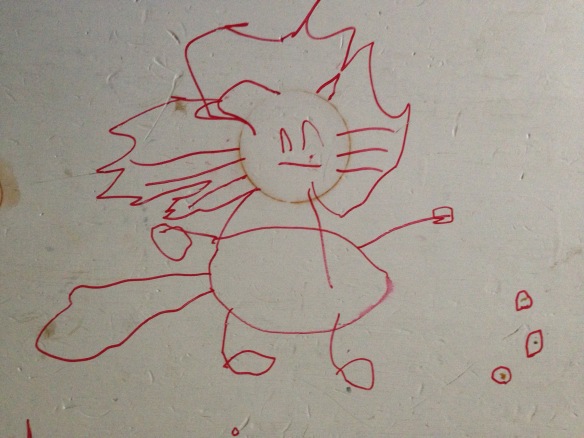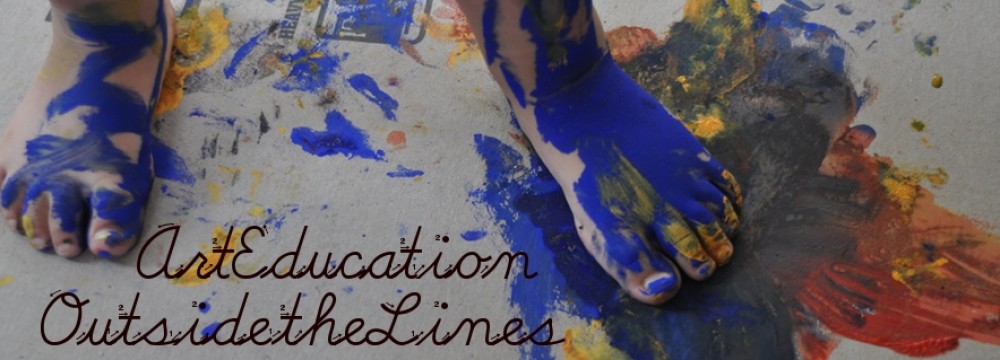 The curator’s talk at the opening of #MobilePhotoNow at the Columbus Museum of Art was a whole lot different from similar talks I’ve been to in the past. While the tone was serious, it was also welcoming. The comments were smart, and thought-provoking, but understandable by folks who don’t spend the majority of their time in white boxes with artists and collectors. Attention was also paid to those who might not speak hashtag as well as Jimmy Fallon and Justin Timberlake. This is all in keeping with CMA’s mission: “to create great experiences with great art for everyone.”
The curator’s talk at the opening of #MobilePhotoNow at the Columbus Museum of Art was a whole lot different from similar talks I’ve been to in the past. While the tone was serious, it was also welcoming. The comments were smart, and thought-provoking, but understandable by folks who don’t spend the majority of their time in white boxes with artists and collectors. Attention was also paid to those who might not speak hashtag as well as Jimmy Fallon and Justin Timberlake. This is all in keeping with CMA’s mission: “to create great experiences with great art for everyone.”
The night started with a greeting from museum director, Nanette Maciejunes, who was proud to let everyone know that “#MobilePhotoNow is the biggest mobile art show on the planet to date, demonstrating the power of social media as a means of creative expression and connection.” She spoke about the museum’s commitment to creativity and innovation and how this show fit with their goals of celebrating and enabling participation in the creative process.
She went on to remind us of a show a few years ago that CMA co-created with the Jewish Museum in New York called “The Radical Camera.” That was a fabulous show which featured many images from The Photo League, a group of (mostly Jewish) politically engaged photographers who focused their lenses on the lives of everyday people, doing everyday things from the end of the Great Depression to the start of the Cold War. CMA owns a lot of works from artists in this group who not only recorded the lives of others, but in doing so, reflected on their own. The League was blacklisted in 1947 and by the time it dissolved in 1951, it “had propelled documentary photography from factual images to more challenging ones—from bearing witness to questioning one’s own bearings in the world.”
It’s clear to see how The Photo League’s citizen reporting paved the way for our 21st century newsfeed of events large and small. But Maciejunes described a less obvious, but equally salient connection between The Photo League and mobile picture sharing, “the photo hunt.” In this creative exercise, league members selected a theme and made images around that theme to share with one another. Sound like anything familiar? CMA staff immediately related it to communities of interest on social media and so the first, CMA-sponsored, Instragram-supported, photo hunt was launched.
The CMA strives to be a participatory museum (Simon, 2010), in the context of a participatory culture (Blandy, 2011). “Connectors” appear in many of the galleries offering visitors opportunities to reflect on and respond to what they see through an activity; a game, a puzzle, a drawing prompt, a wall of post-in notes and a question. For The Radical Camera, CMA staff crowd-sourced images through a series of photo hunts and displayed their favorites. Maciejunes recalled that when she walked into the opening for the show and didn’t recognize anyone, she knew they were onto something big. They were connecting with a new audience.
The CMA Photo Hunt helped bring together mobile photographers in and around Columbus. Seeing the exhibition brought to light the potential of social media to inspire artistic practices that are at once personal and collective. But, at the time, I still didn’t have a smartphone so the whole thing was somewhat lost on me. Now I get it. Little did I know that for more than two years members of the jj community were pushing one another to make art, and share it everyday. What art educator wouldn’t like the sound of that?
Recently, in connection with a course I’m teaching, and in expectation of #MobilePhotoNow, I started using Instagram and following the #jj daily challenge stream. It’s intense, and beautiful. These are not a bunch of poorly-lighted selfies and half-eaten meals, they are (on average) well-designed, artfully composed, and intentional images shared with pride and purpose. See for yourself. Here’s something that showed up last night.
 It was a response to the day’s theme:
It was a response to the day’s theme:
 This is a kind of formalist invitation (similar to black & white or group shots). Others are more conceptual (where I live, tourist trap, the night) or object-oriented (cars, the beach, woods). It’s a nice balance really. So often art educators struggle with questions of focusing on form or content, agreeing in the end that a balance is ideal. I only scrolled through a few weeks of challenges to get this collection of examples but it suggests a pretty well-rounded “curriculum” to me.
This is a kind of formalist invitation (similar to black & white or group shots). Others are more conceptual (where I live, tourist trap, the night) or object-oriented (cars, the beach, woods). It’s a nice balance really. So often art educators struggle with questions of focusing on form or content, agreeing in the end that a balance is ideal. I only scrolled through a few weeks of challenges to get this collection of examples but it suggests a pretty well-rounded “curriculum” to me.
Everyday, people from around the world tag between 5 and 10,000 images with the hashtag #jj. This means anyone who searches for jj in Instagram will be able to find their image. When jj founder Josh Johnson spoke at #MobilePhotoNow, he expressed his personal love for the community he helped create. In a shaky voice he described Instagram as a place where “this buttoned up preacher’s son could be himself.” He reminded the audience of the connection between dopamine and addiction, how we respond emotionally to immediate response and gratification. Try 30 second feedback. “Powerful things can have pluses and minuses. Some of us spend too much time taking pictures. But if you have to have an addiction taking pictures isn’t really a bad one to have.”
CMA partnered with jj community to organize and manage #MobilePhotoNow. They hosted 4 challenges in one month this fall: street, portrait, black & white, and community generating 45,000 submissions from 5,000 photographers in 89 countries. A jury process through the jj community yielded about 600 images with 320 finalists selected by the museum staff. The images were printed locally, for free, by a graphics company supportive of the project whose name I should credit here but can’t recall.
Jennifer Poleon, CMA Digital Communications Manager and organizer of the CMA Photo Hunts introduced contributors in the crowd from Sweden and Iran as well as an older women, who looked to be around 70 years old. Her son, a photojournalist in town, got her on Instagram and soon thereafter she showed up at a CMA “insta meet.” This is like a flash mob where strangers all show up at a designated place to share some experience. There she met other photographers who welcomed her and offered her tips. I loved this idea. Putting mobile photography in the hands of older folks and encouraging them to take pictures and participate in a community of creators. It’s an idea I want to push my students working with aging populations to seriously consider. For house- and institution-bound folks in particular, Instagram can offer a forum for rich connection, taking them across the Earth and back.
Kevin Kuster, who helps run jj described it as a modern day pen pal project; one which yields responses everyday. “The virtual world is not virtual,” he suggested. “It is deep and personal and when you do meet, you already know one another.” Kuster came to mobile photography after burning out in the world of professional photography. He described this as “the best time in the world for photographers. And the worst time to be a professional photographer.”
The enthusiasm throughout this session was palpable. It ended with a declaration from the museum’s contemporary curator, Tyler Cann: “I want to say. Yes, this is photography, and you are photographers. And I hope this exhibition creates more photographers and more radical eyes.”
An online gallery for the exhibition should be available tomorrow. Google it.
 Cora found a stain on the coffee table today and turned it into a lion. With red Sharpie.
Cora found a stain on the coffee table today and turned it into a lion. With red Sharpie.








